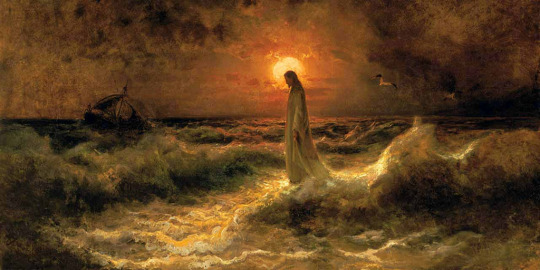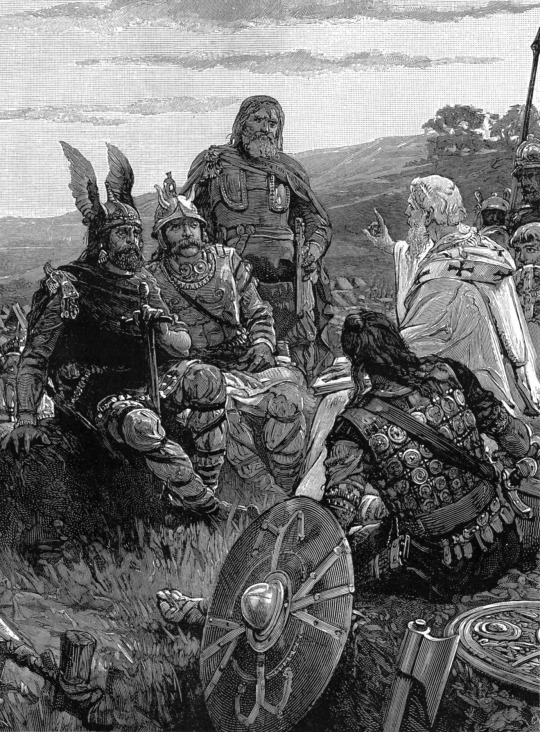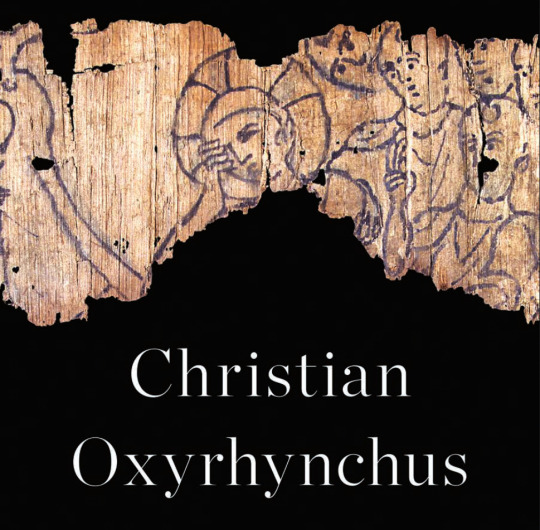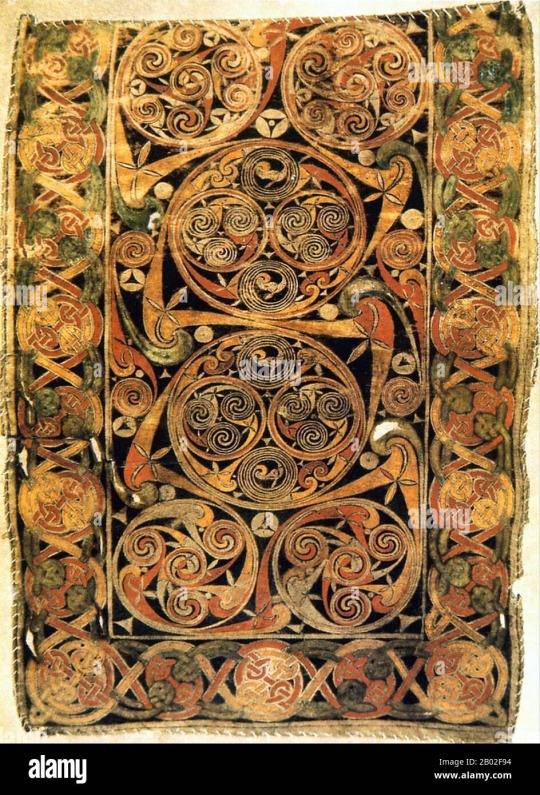#gospels
Text

1K notes
·
View notes
Text

Christ Walking on Water, Julius von Klever, ca. 1880
#art#art history#Julius von Klever#religious art#Biblical art#Christian art#Christianity#New Testament#Gospels#Miracles of Christ#Romanticism#Romantic art#Estonian art#German-Estonian art#19th century art#oil on canvas
3K notes
·
View notes
Text

Bishop Wulfila explains the Gospels to the Goths
#wulfila#ulfilas#goths#art#gothic#germanic#greek#europe#european#history#christian#christianity#religion#religious art#religious#bishop#gospels#bible#visigoths#visigodos#visigoth
454 notes
·
View notes
Text
Be the "dog" that impresses Jesus
65 notes
·
View notes
Text
Collection of Old Church Slavonic texts in PDFs
I've been collecting Old Church Slavonic texts that have been dated to the 9th and 10th century Great Moravia and the First Bulgarian Empire, and reconstructed to as close to the original as possible with restored orthography, since most surviving copies are from much younger manuscripts and some details might have been lost in transmission and changes to the orthography.
LINK (Google Drive folder)
All files with (g) at the end also contain text in the Glagolitic alphabet.
PLEASE SHARE!!!
#old church slavonic#slavonic#glagolitic#great moravia#bulgaria#medieval#manuscripts#text#slavic#philology#linguistics#languages#christianity#book of enoch#bible#gospels
20 notes
·
View notes
Text

“All four gospels witness to Mary Magdalene as the premier witness to the resurrection - alone or in a group, but in all cases named by name. . . All four gospels insist that when the other disciples are fleeing, Mary Magdalene stands firm. She does not run, she does not betray or lie about her commitment, she witnesses. But why, one wonders, do the Holy Week liturgies tell and re-tell Peter's threefold denial of Jesus, while the steady, unwavering witness of Magdalene is not even noticed? How would our understanding of the Paschal Mystery change if [the role of Magdalene was acknowledged?] What if, instead of emphasizing that Jesus died alone and rejected, we reinforced that one stood by him and did not leave? For surely this other story is as deeply and truly there in the scripture as is the first. How would this change the emotional timbre of the day? How would it affect our feelings about ourselves? About the place of women in the church? About the nature of redemptive love?”
~ Cynthia Bourgeault, 'The Meaning of Mary Magdalene'
(Ian Sanders)
14 notes
·
View notes
Text

IF JESUS HAD DIED IN 2000
Paul would be writing his various letters* in the 2020's
*the letters that most scholars consider genuine; Galatians, 1 Thessalonians, 1-2 Corinthians, Romans, Philipians & Philemon
- a generation later and having never known Jesus in person
Gospel of Mark won't be written until around the 2030's
- with no claims of Jesus' virgin birth, ascension and divinity
Gospel of Matthew won't be written until around the 2040's
- with the first record of virgin birth, Bethlehem origin, guards & angel at tomb
Gospel of Luke won't be written until around the 2050's
- with the first record of a post-resurrection Jesus eating, appearing & disappearing and ascension to heaven
Gospel of John won't be written until around the 2060's
- with the first record of the incarnation of Jesus (god-man), divinity claims of Jesus, the seven "I am" sayings of Jesus and Jesus' lengthy discourse with Pilate
This sure sounds like something that people just made up.
#christianity#jesus christ#bible#gospels#bible study#saint paul#gospel of mark#gospel of matthew#gospel of luke#gospel of john#resurrection myth#resurrection#virgin birth#virgin birth myth#origin of the bible#obvious fiction#religion#religion is a mental illness
134 notes
·
View notes
Text
See in the crucifixion not merely a martyr’s death, not merely a passing gleam of God’s love, certainly not a sacrifice to God carrying a legal significance, but in truth the flashing into light of an eternal fact, the nature of God’s relation to sin, of the pain we inflict on his heart by our own wrongdoing. Here is the wonderful dynamic of the cross. God calls you to him. He shows you his suffering, he shows you the hatefulness of the sin that caused it [...].
In Jesus, in his life and his death upon the cross, we are shown the nature of God and the possibilities that are within our reach. We are shown the world as the Father sees it, are called to live in harmony with his will and purpose [...].
[I]n the active, free and holy love of God, ever seeking entrance, ever powerful if we but yield the gateway of our heart, is the substance of the Gospel.
John Wilhelm Rowntree, 1904
#John Wilhelm Rowntree#quaker#quakerism#christianity#the free and holy love of God#gospels#crucifixion#the messianic suffering of God
41 notes
·
View notes
Text

“This idea of an imminent death, closely bound moreover to the second coming of Christ, obsessed the entire first Christian generation. Herein lies the unique example of a collective experience of death. In the world of our experience, to realize this idea of death amounts to endowing our life with a new meaning. Actually, what is revealed here is the triumph of the flesh, of the physical terror before this appalling outcome. And it is no surprise that Christians have had such a bitter sense of the humiliation and anguish of the flesh and that these notions have been able to play a fundamental role in the development of Christian metaphysics. "My flesh is clothed with worms and dirt; my skin hardens, then breaks out afresh. My days are swifter than a weaver's shuttle, and come to their end without hope." As we see it, the Old Testament, with Job and Ecclesiastes, had already set the tone for this development.
But the Gospels have placed this sense of death at the center of their worship.
Actually, we are not sufficiently aware that Christianity is centered around the person of Christ and around his death. We turn Jesus into an abstraction or a symbol. But the true Christians are those who have realized the triumph of the martyred flesh. Jesus being fully human, the emphasis had been concentrated on his death, and one scarcely knows of a more physically horrible death. It is on certain Catalonian sculptures, on the broken hands and the cracked joints, that one must reflect in order to imagine the terrifying image of torture that Christianity has erected as a symbol, but it suffices just as well to consult the well-known texts of the Gospel.” (p. 47, 48)
#camus#albert camus#christianity#metaphysics#neoplatonism#death#life#meaning#gospels#crucifixion#absurdism#books#bookshelf#library
20 notes
·
View notes
Photo

"We find Christ in all the Scriptures. In the Old Testament He is predicted, in the Gospels He is revealed, in Acts He is preached, in the epistles He is explained, and in Revelation He is expected."
- Alistair Begg
#Jesus#Scriptures#Old Testament#find#Gospels#Acts of the Apostles#Revelation#Alistair Begg#Christian Quotes
29 notes
·
View notes
Text
youtube
The Gnostic Christian Writings Read at Oxyrhynchus: https://youtu.be/-x7CPpVNApw?si=_fLCAvNEs9JJMIKi

#christian mysticism#christian mystics#Oxyrhynchus#egypt#ancient texts#gospels#sayings of jesus#gnostic#gnostic gospels#gnosticism#christianity#early christian writings#gospel of john#gospel of thomas#gospel of mary magdalene#unknown gospels#gospel of matthew#Youtube
5 notes
·
View notes
Text

Entry of Christ into Jerusalem, Pietro Lorenzetti, ca. 1320
#Palm Sunday#Holy Week#liturgical calendar#art#art history#Pietro Lorenzetti#Middle Ages#medieval#medieval art#Gothic art#International Gothic#Sienese Gothic#religious art#Biblical art#Christian art#Christianity#Catholicism#New Testament#Gospels#Trecento#Italian art#14th century art#fresco#Basilica of San Francesco d'Assisi
394 notes
·
View notes
Text

Christ and the Blind Man by Henri Mauperché
#jesus christ#jesus#christ#healing#blind#miracle#miracles#gospels#gospel#henri maupérche#art#religious#religion#christianity#christian#architecture#healer#bible#biblical#landscape#classical
104 notes
·
View notes
Text
Page from the Book of Durrow, Irish illuminated manuscript, circa 700 AD

5 notes
·
View notes
Text
When debating Christians about the veracity of the Gospels, remember that the disciples of Christ were fictional characters as well, and their testimony about seeing the resurrection was also made up by the authors who wrote the fictional life of Jesus in the first place. The Acts of the Apostles in particular is a historical novel, not a documentary.
5 notes
·
View notes
Text

You shall not turn away the needy, but shall share everything with your brother, and shall not say that it is your own, for if you are sharers in the imperishable, how much more in the things which perish?
οὐκ ἀποστραφήσῃ τὸν ἐνδεόμενον, συγκοινωνήσεις δὲ πάντα τῷ ἀδελφῷ σοῦ καὶ οὐκ ἐρεῖς ἴδια εἶναι· εἰ γὰρ ἐν τῷ ἀθανάτῳ κοινωνοί ἐστε, πόσῳ μᾶλλον ἐν τοῖς θνητοῖς;
— Didache or The Teaching of the Twelve Apostles (Διδαχὴ Κυρίου διὰ τῶν δώδεκα ἀποστόλων τοῖς ἔθνεσιν) (ca 120-170 CE). The Didache is of equal antiquity with the earliest texts later assembled into the New Testament, of which early church fathers considered it a part. It provides an excellent glimpse into the thinking of the leaders of the early church, and it directly contradicts the "prosperity gospel" of modern American white Evangelicals on virtually every issue.
[Robert Scott Horton]
9 notes
·
View notes